The Biggest Event of the Year in my City: The Procession of the Divine Shepherdess
“Without faith, nothing is possible. With it, nothing is impossible.”
Mary McLeod Bethune
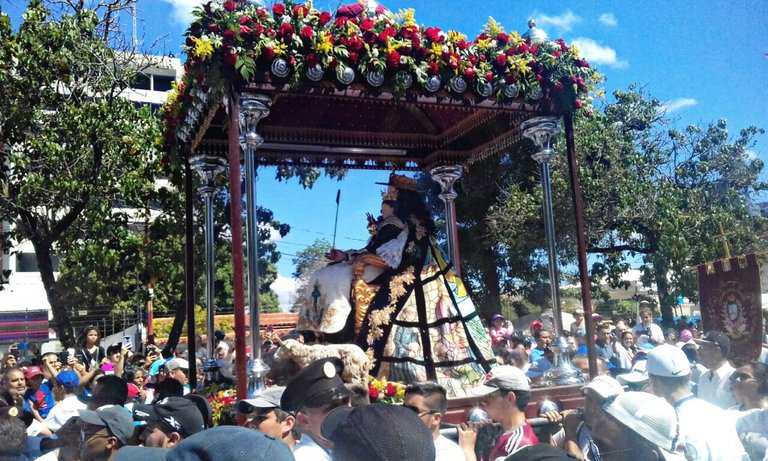
The Biggest Event of the Year in my City: The Procession of the Divine Shepherdess
The largest annual event in the city where I live, Barquisimeto, is an event of a religious nature, and it is, in addition to being the event that brings together the largest number of people on the same day, with the same purpose in the country, it is also one of the largest in the American continent.
Last Tuesday, January 14th, the Procession or Visit number 164 of the sentimental patron of Larenses to the city of Barquisimeto was held. The image of the Divina Pastora (Divine Sherpherdess), a Marian invocation whose origins date back to the Spanish city of Seville at the beginning of the 18th century, and which arrived on Venezuelan soil in 1736; He went out in procession that day, as he has done every year without interruption since 1856, on the shoulders of the congregation of the Minor Basilica of Santa Rosa de Lima, located in the neighboring town of Santa Rosa, to the Barquisimeto Metropolitan Cathedral, in a journey of about 7.50 kilometers that takes about six hours, accompanied by a crowd of faithful that in recent years has exceeded 3 million souls, which makes it the second largest Marian manifestation in the world, second only to that of the Virgin of Guadalupe in Mexico City.
In recent years, and as a consequence of the erratic decisions of the Venezuelan regime, more than 5 million compatriots have left the national territory to try their luck in other destinations, taking with them their customs, flavors and traditions, so in various cities of the world, events of lesser magnitude have been held to remember the Divina Pastora, on January 14th or in nearby days. Among these cities, Lima, Madrid, Miami, Santiago de Chile and Seville stand out, with new towns joining these festivities every year.

The Origin of Devotion
The devotion to the Divina Pastora de las Almas (Divine Shepherdess of Souls) dates back to the 18th century, when in June 1703 in the Capuchin convent of the Santas Justa and Rufina in the Spanish city of Seville, the friar Isidoro had a vision of the Virgin Mary dressed as a shepherdess with a purple tunic, a blue mantilla in a country landscape, surrounded by trees and sheep, and carrying in her hand a staff or crook typical of herding work.
Moved by the image, he would ask a local painter, Alonso Miguel de Tovar for a painting with the image of the Divine Shepherdess that he would have seen in his dreams. This oil would go out in procession on September 8, 1703 through the streets of Seville in the midst of a large gathering of faithful. The following year, the friar would entrust the artist Francisco Antonio Ruiz Gijón with the task of making a life-size sculpture, which would be transferred to the church of Santa Marina.
In 1736, the parish priest of the Immaculate Conception Church, located in the center of the city of Barquisimeto, requested an image of the Divine Shepherdess, on the other hand, the parish priest of the town of Santa Rosa del Cerrito would the same with an image of the Immaculate Conception Virgin. Both orders would be consigned in the same document for the same sculptor in the city of Seville. The drawers containing the images would arrive at the same time, only in the wrong parishes, that is, the Divine Shepherdess arrived at Santa Rosa and the image of the Immaculate Conception at the temple of the same name, this being a possible cause of confusion.
According to the story, the parish priest of Santa Rosa, upon realizing the error, would order the Indians in his service to close the drawer and transfer it to the Immaculate Conception Church parish, however, to the astonishment of those present, an unusual event would occur, which would be described as a miracle: the box with the image inside would become so heavy and no matter how much effort the Indians made to load it, it was not possible to remove it from the floor of the church, interpreting this as a sign that the Divine Shepherdess did not want to leave the temple of the small town, so the parish priest would make the decision to leave her there.
In 1812, during the devastating earthquake of March 26 that hit a large part of the Venezuelan territory, destroying the main cities and causing thousands of deaths; the temple would collapse completely, with the exception of the niche where the image was, which was practically unharmed.
Later in the year 1856, the city of Barquisimeto and the nearby towns would be victims of a cholera epidemic. Father José Macario Yépez, would summon on January 14 of that year a public prayer or prayer in the site of Tierritas Blancas, where a few days before, they had placed a "Saving Cross" for the protection of the settlers. He gave instructions to transfer to the site the image of the Divine Shepherdess from the nearby town of Santa Rosa and that of the Nazareno from the church of Immaculate Conception. That day, Father Yépez would beg the Virgin to be the last victim of the terrible plague, which occurred in June of that year, eradicating since then this deadly scourge that mercilessly hit the defenseless population.

Santa Rosa, Lara, Venezuela

The Dress
Every year, the Divine Shepherdess is dressed in a new outfit, which is usually donated by religious congregations, companies or institutions, or even by local faithful, and seamstresses who work for months in absolute anonymity are chosen for its preparation. until about two or three weeks before the procession, the dress and the names of the benefactors are revealed to the press, in an event widely expected by the parishioners and that sometimes leads to comments in favor and against the dress
This year, the image wore a dress donated by the De La Salle Brothers, which presents a stained-glass-like cape in white, black and gold, with scenes of Pope Leo XIII and the life of Saint John Baptist de La Salle, founder of the educating congregation, in addition to the flags of Venezuela and France, the latter corresponding to the country of origin of the Lasallian brothers.
On the front of the dress, there was an anchor, symbol of hope, one of the three theological virtues, next to the cross, symbol of faith, and the heart that represents love.
The dresses and accessories that the Virgin has used in previous years are kept in the "Divina Pastora" Archdiocesan Museum, located on one side of the temple, and it is possible to visit its facilities to see them.
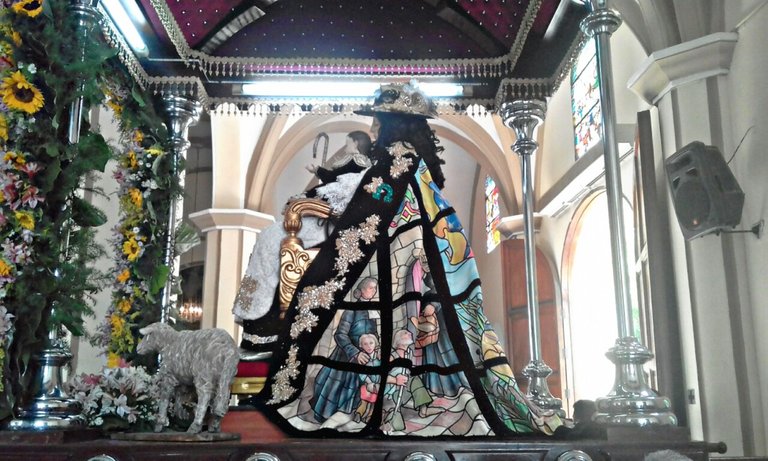
January 2020
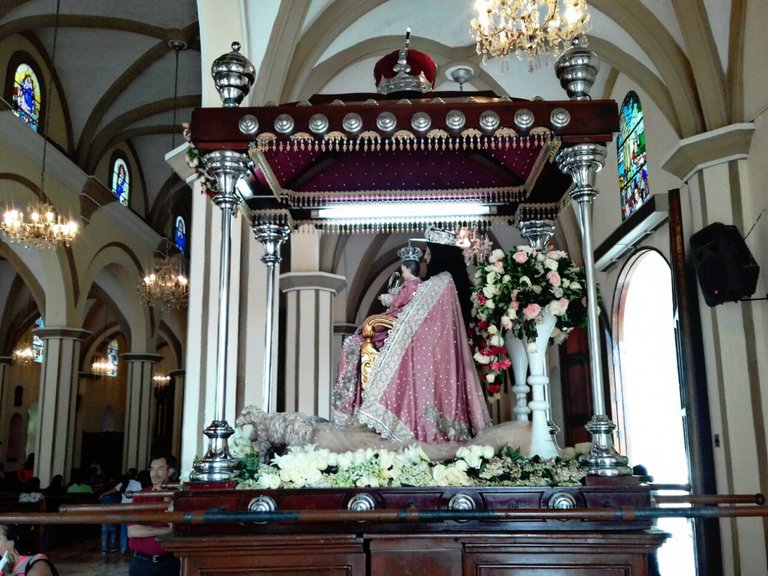
January 2019

This year, as I have done for the last 25 years, I was present at the procession. Previously I attended in the company of my children and their mother, then I would do it accompanied by whoever was my sentimental partner until last year, and this time, alone, however, every January 14, our city decks itself to receive its Excelsa Patroness, a unique experience that, regardless of the religious beliefs one may have, is worth living.
Given the existing confinement by the coronavirus Covid-19 and the recommendations issued by the World Health Organization, it is unknown for sure if the procession can be carried out in the traditional way next year, as it is impossible guarantee social distancing among the millions of attendees, so we will have to wait whatever course the pandemic takes in the months to come.
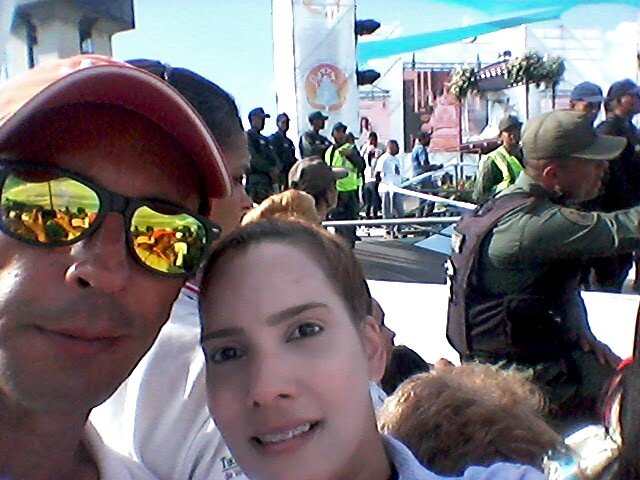
January 2018


- Camera: Samsung Galaxy J1 mini prime
- Photo Editor: PicsArt
- Location: Lara State, Venezuela
- Dates: Several
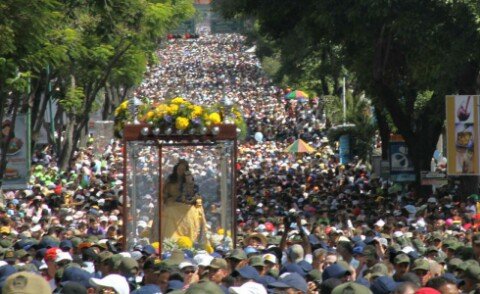
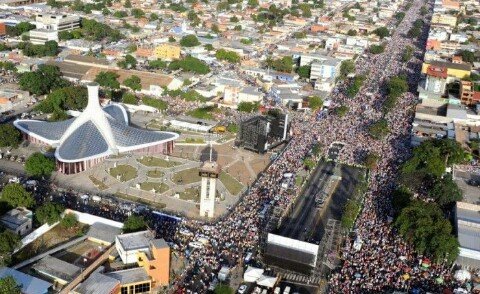
twitter link: #posh
https://twitter.com/manuelgil64/status/1301227144278835203?s=19